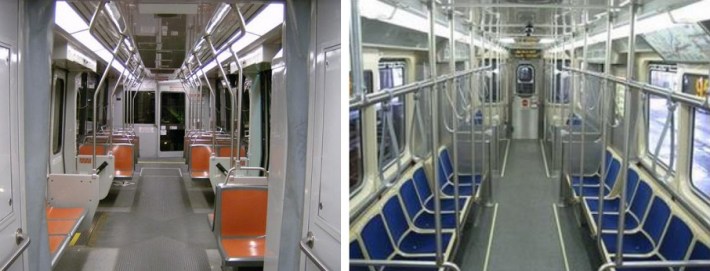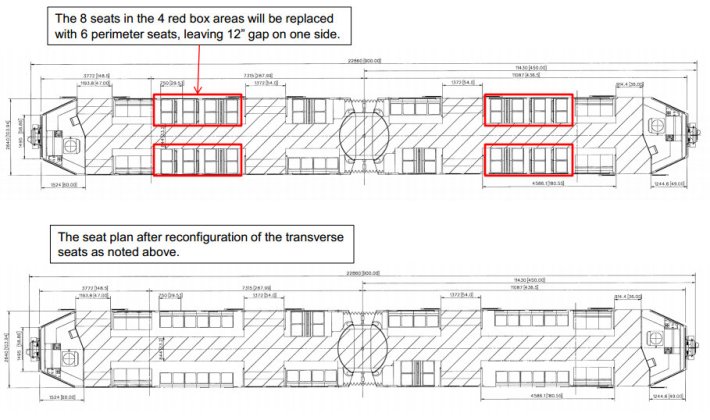
After a nudge from two city supervisors, Muni is looking to convert forward- and backward-facing seats to side-facing seats in its light-rail train cars as a way to squeeze in more passengers and speed up boarding.
The SFMTA plans to run a trial starting in January by putting one reconfigured prototype car into service, which would be monitored over six months before reconfiguring other train cars.
The pilot is moving forward at the behest of Supervisors Scott Wiener and London Breed, who called a hearing held yesterday on how the agency can increase capacity on its metro system while Muni riders await a new, larger train fleet due to arrive in 2017. By converting most seats to a sideways-facing orientation, planners estimate they could allow room for five to eight more passengers per train car while removing obstacles that can create bottlenecks when riders squeeze in and out at stops.
"The situation is severe enough that we need to find creative ways" to increase capacity, said Breed. "When a two-car train pulls up at Carl and Cole, that means 16 more people could be able to board, 16 more people can get to work on time, 16 more people will be inclined to keep riding Muni and not use their vehicles."
Currently, 114 of Muni's 151 train cars are in service, and most of the rest are in need of repair, according to agency staff. The Muni metro system lacks the number of train cars it needs to make all of its scheduled runs on half of service days.
Among the laundry list of flaws with Muni's current trains -- manufactured by Breda, which has been disqualified from vying for the next production contract -- is their unusually inefficient interior design, said Wiener. The expected capacity for Breda train cars is 218 people -- 60 in seats, 158 standing.
"We're going to need [these cars] for a while," said Wiener. "We need to make the most of the light-rail vehicles we have."
Seat reconfigurations would cost an estimated $20-30,000 per train car -- "a relatively modest amount," said Lee Saage, deputy director for capital projects for the SF County Transportation Authority. The project could be funded with revenue from the local Prop K transportation sales tax.
One major challenge of the car reconfigurations, Saage said, would be designing the re-placement of grab bars attached to the seats and roof of the trains. John Haley, Muni's transit director, said the two sandboxes located underneath on each train car (sand is dumped on tracks to help the trains brake) cannot be moved and may project out farther than the sideways-facing seats.
Under a reconfiguration design proposed by the supervisors, each of a car's four sets of eight front- and back-facing seats would be replaced with six side-facing seats along the train's wall, creating a 12-inch gap, according to diagrams presented by Haley. Altogether, eight seats per car would be removed, and allow for 16 more passengers. Muni anticipates a smaller increase of up to eight passengers, but Haley said the proposal needs more review.
Haley said the prototype car launched in January would be one of two wrecked train cars which the agency is due to receive back in November after being reconstructed by Breda, and which haven't had their seats re-installed yet. (Haley didn't specify how the trains were wrecked, but they may have been involved in a metro crash that occurred in July 2009 at West Portal Station.) "These cars were essentially gutted and are being rebuilt," he said.
The SFMTA currently has no timeline for when re-configurations could be expanded beyond the one-car pilot. The agency is also testing other service changes in the metro to relieve crowding, such as running three-car trains within the underground system only, as well as double-train loading.






